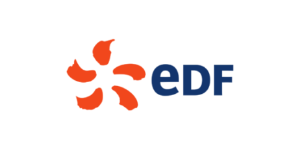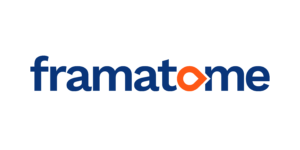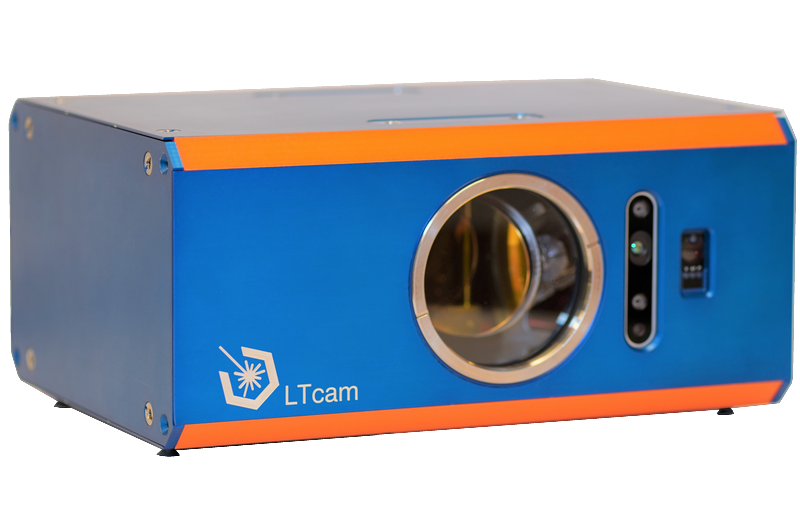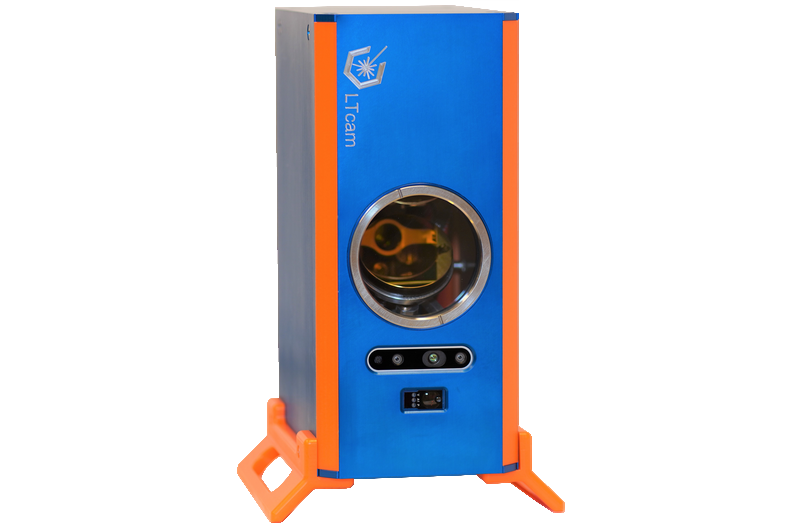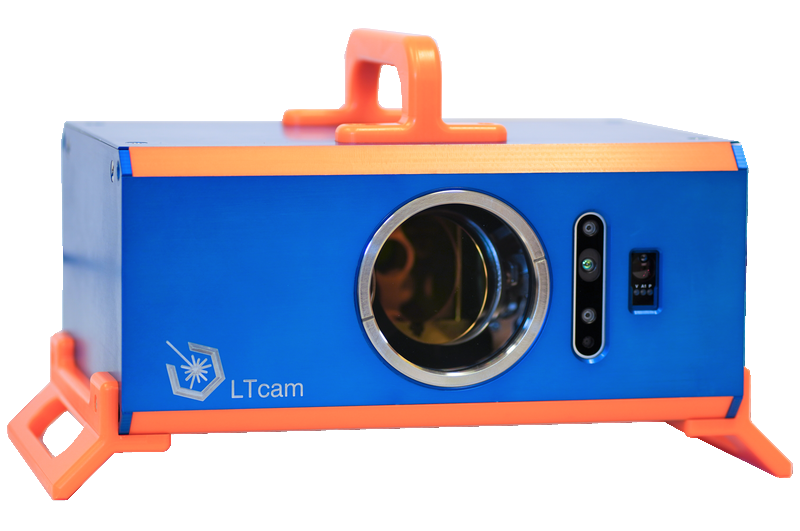LTcam Laser Thermography NDT
The LTcam is your new tool for Non Destructive Testing by Laser Thermography. Designed to detect surface and sub-surface defects on your materials (cracks, crevices, folds,…), the LTcam is an excellent alternative to traditional testing methods such as penetrant testing and magnetic particle inspection.
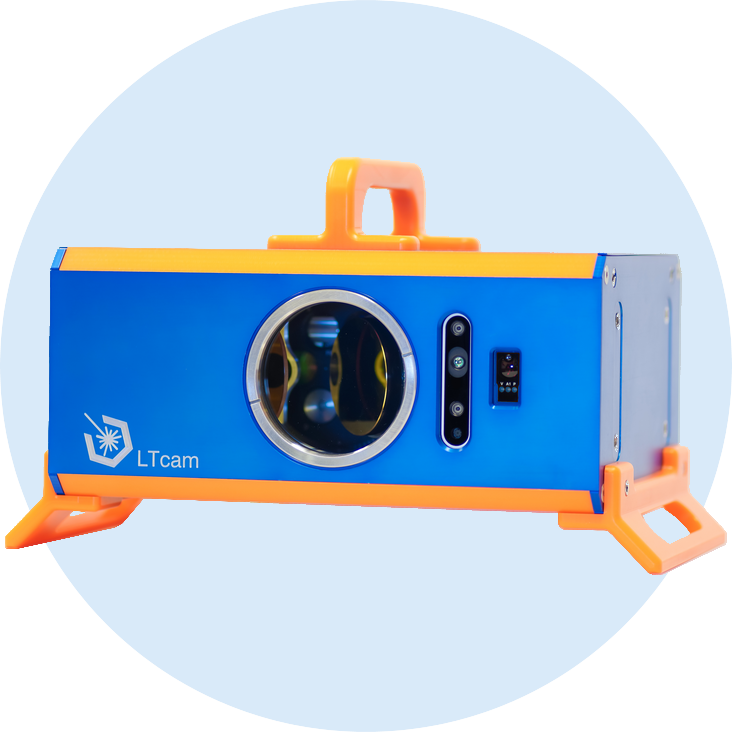
Download the brochure
Performances
- Inspection rate: 2 m²/h (variable depending on the application)
- Detection of open, underlying and undercoating defects with small openings (a few microns)
- Demonstrated detection capabilities on different materials (ferritic and stainless steels, Inconel, aluminium, etc.) and on different surface finishes (rough, ground, machined, polished, etc.)
- Inspection of large areas without moving the camera (up to 2 m²)
- Inspection of hard-to-reach areas (cavities, bores, tubes…) possible thanks to an optical mirror system grâce à un système optique de miroirs
- Can be integrated into a multi-axis automatic robot for the control of large areas with overlapping controlled zones
- Working distance between the LTcam and the surface to be inspected between 0 and 1.5m
Features
OPTICS
- Laser line with adjustable lenght from 30 to 90 mm
- Class 4 laser
- Laser power up to 200 W
- Adapted laser optics
- Homogeneous laser line
- Working distance: from 150 mm to 1500 mm
- High Resolution Infrared Sensor
- Use of different focal lengths
PHYSICS
- Dimensions: 160 x 250 x 290 mm
- Weight: 15 kg
- Multiple and removable handle system
- Robot mounting plate on top and on the side
In few words
What is the LTcam?
The LTcam is the latest iteration of the Active Photothermal Camera (CPA), a laser thermography system developed by Intercontrôle. This new version has been developed in partnership with Edevis, a German company specialising in active thermography NDT, and Thermoconcept, its exclusive French distributor of active thermography NDT solutions.
As the CPA, the LTcam allows the detection of surface and underlying defects by exploiting the infrared emissivity of the inspected element resulting from the thermal excitation generated by the laser.
The energy source used is a class 4 heating laser with a maximum power of 200 W (previously 100 W). This laser, which is a point laser at the output of an optical fibre, is transformed into a laser line by means of microlenses. A clever system of mirrors and motors allows the horizontal and vertical movement of this line to scan the surface to be inspected. These last elements have been totally redesigned and improved for the LTcam, compared to the old version of the CPA, Athena.
The housing of the new LTcam has been designed for more modernity and modularity (modular handles, robot mounting, feet). Finally, a new software developed by Edevis, based on their standard DisplayImg 7 software, accompanies this new version of the CPA.
Last publication
Interview | Laser thermography: eagerly awaited NDT software
The launch of the new Active Photothermal Camera (APC) is near. So, despite the current circumstances (COVID-19), we remain mobilised because we are keen to share with you the advances made on this product. After telling you about its very promising results and its...
Interview | Laser thermography: eagerly awaited NDT software
The launch of the new Active Photothermal Camera (APC) is near. So, despite the current circumstances (COVID-19), we remain mobilised because we are keen to share with you the advances made on this product. After telling you about its very promising results and its...
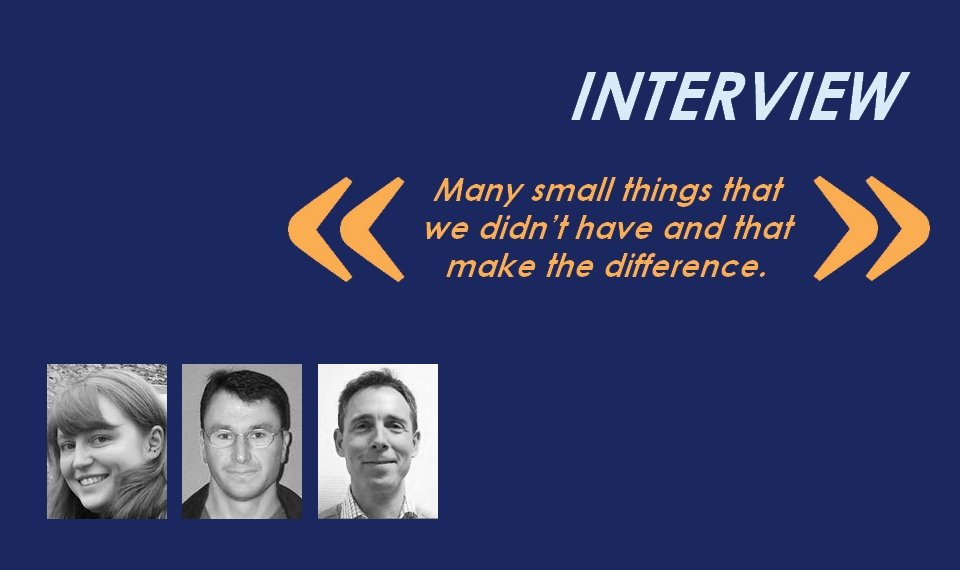
Interview | Laser thermography: eagerly awaited NDT software
The launch of the new Active Photothermal Camera (APC) is near. So, despite the current circumstances (COVID-19), we remain mobilised because we are keen to share with you the advances made on this product. After telling you about its very promising results and its...
What are the benefits for the user?
15 strong points of the LTcam
An association of 3 experts
The LTcam is the result of an intelligent fusion between the know-how of 3 experts

Intercontrôle
As a major partner in the project that led to the creation of the former CPA, Intercontrôle brings all its know-how, its experience and its knowledge to carry out laser thermography inspection in optimal conditions.

Edevis
As an integrator of Non Destructive Testing (NDT) solutions by active thermography, Edevis has coordinated and managed the development and improvement of the existing concept in close collaboration with the other partners. The LTcam was born from this fruitful collaboration.

Thermoconcept
As a recognised expert in NDT by active thermography, Thermoconcept enabled the 3 partners to be brought together. Today it also brings its experience in the commercial, marketing and communication fields to promote and market the LTcam solution.
Targeted activity sectors
Our clients work mainly in the following sectors
Automotive
Aeronautics
Railway
Nuclear
Electricity
Wind Turbine
Photovoltaics
Petrochemicals
Our references
They put their trust in us
